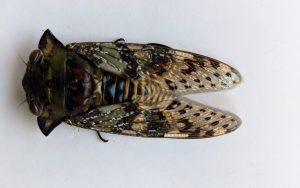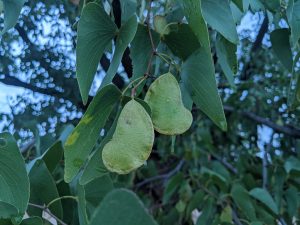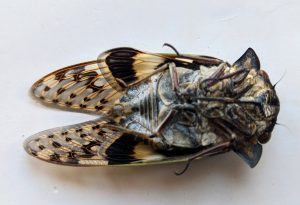Relentless, Invisible Chirpers; Cicadas_Nyenze
Platypleura haglundi/ Cicadas/ Nyenze
As far as I can remember, each summer in my village, Marange, I hear the loud, persistent, chirping or grating calls of a particular insect. This is especially after 10am when the sun is super hot, but never able to locate it. Anyone in Southern Africa especially in hot areas, you are familiar with this piercing sound. This particular insect is called Platypleura haglundi/ Cicadas and Nyenze in Shona.
Cicadas belong to the ‘true bug’ group of insects, Hemiptera, which comprises of over 3,000 cicada species globally, with 60 of them found in Africa. Platypleura haglundi is the medium-sized African cicada species that occurs from northern South Africa to Zimbabwe, where it is found in diverse habitats.
Cicadas have a large head, two prominent, wide-set eyes, a stout form, and long front wings that extend well beyond the end of the body.

DIET: Cicadas feed by sucking saps and other plant juices. Among these food trees are various acacias, mimosas, poincianas, birds plum (nyii), terminalia (mususu), Morula (mupfura), White Syringa (Mutuwa) and Red bushwillow (mugodo).

Mophane leaves
THE CAMOUFLAGE EFFECT: Cicadas are not known just by their peculiar calls only, but they are also called masters of disguise. This is why; many of them are carefully patterned with patches, mottles and speckles to correspond with the bark of their favourite food trees.
FLASH OF ORANGE COLOUR: It’s not always easy being a cicada, because you need to always watch out for smart predators like lizards and birds. In any battle field, the most effective way to defend yourself is to confuse your enemy. How do they do it? Like many insects, cicadas have two pairs of wings. Their long forewings have see-though panels and coloration to match tree bark. So why are some cicadas called orange winged or ochre-winged cicadas? The answer is obvious, when the cicada is disturbed and takes flight, it raises its forewings to expose the hind wings with their rich yellow, orange red or ochre pigmentation. This sudden, unexpected flash of bright colour is often enough to confuse or deter a possible predator such as a bird or lizard. Smart!!!!!!!!!

THEY ARE EDIBLE: The adults are active from October to March when they are harvested and consumed as relish. Cicadas are flying insects, making it difficult to harvest them. But with a bit of experience, it becomes all easy. One way of catching them is to use light. During the night, the insects are attracted by light. Make a huge fire under the trees or bring a very bright light and the Cicadas will fly down the trees making it easy to catch the insects.
But there is another way. When young, during our livestock herding days, we used to catch over 100 cicads in an afternoon. This is how we used to do it. Get a meter long straight thin tree branch; attach any strong piece of wire (preferably any above 2.5mm gauge because you don’t want it to bend) on one end. Voila …. You have the perfect hunting instrument. Cicadas are super smart, sensitive to sound, if you just get too near to them, they fly away, so it’s best to hunt them from afar. While they are perched on a tree branch, use the end with a wire to pierce them and bring them down.
Just like any proud hunter (hombarume, hombakadzi) at the end of the day we used to take our wares home to give our mothers to prepare them for consumption. Mom would begin by removing their wings, and then boil the insects for about 5 minutes before sun-drying or frying them. They were and remain the perfect source of protein and other nutrients for most rural communities who cannot afford beef, chicken or fish.
- Crisis in Conservation: Protecting Kigelia Africana and Baobab Trees in Zimbabwe” - August 31, 2024
- Empowering Marange’s Youth: Celebrating Africa Environment Day at Holy Ghost High School - March 14, 2024
- Sowing Seeds of Hope: Rejuvenating Chiadzwa’s Environment Through Tree Planting” - March 11, 2024




